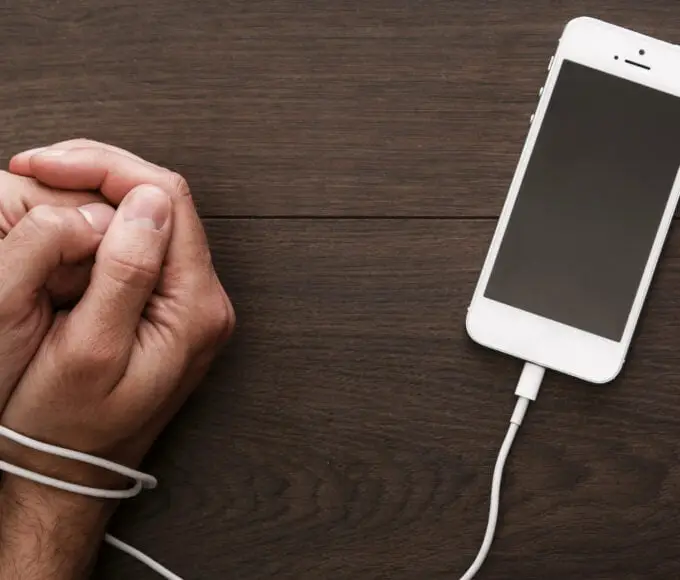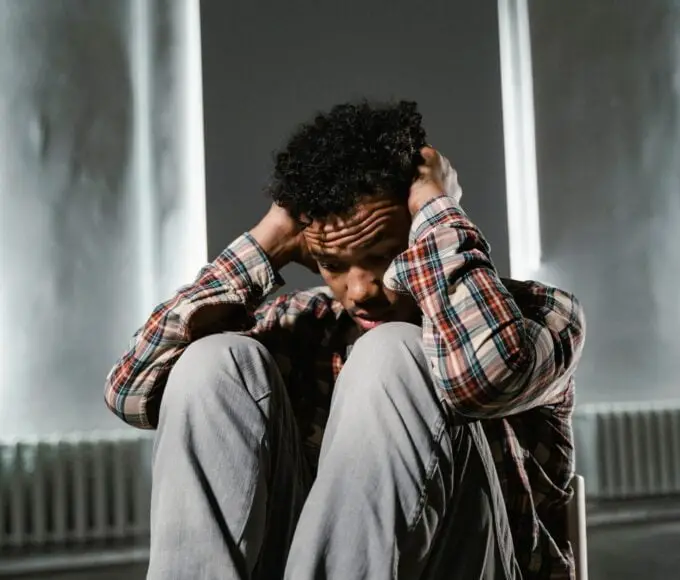Abstract: This blog post explores the phenomenon of claustrophobia, commonly known as the fear of small spaces. Delving into the various aspects of this phobia, we provide insights into its causes, symptoms, and potential treatments. Through a comprehensive breakdown, we aim to create awareness and offer guidance on how to overcome the fear of being in confined environments.
Claustrophobia, also referred to as the fear of small spaces, is a common anxiety disorder that affects millions of individuals worldwide. In this blog post, we will examine the nature of this phobia, its impact on individuals’ lives, and effective methods to manage and overcome it. Let’s delve into the ten main headings to understand claustrophobia better:
What is Claustrophobia?
Claustrophobia is an anxiety disorder characterized by an irrational and intense fear of being in small, enclosed spaces. Individuals with claustrophobia often experience extreme distress and discomfort when confined to tight spaces, leading to avoidance behaviors and heightened anxiety.
Understanding the Fear of Small Spaces Phobia
The fear of small spaces phobia is an overwhelming emotional response triggered by the perception of being trapped in a confined area. This fear can stem from various factors, including past traumatic experiences or an innate sensitivity to confined environments. The fear can be disruptive to daily life, causing individuals to avoid situations or places where they might encounter small spaces.
Prevalence of Phobia in Small Spaces
Claustrophobia is relatively common and can affect people of all ages and backgrounds. Research suggests that about 2-10% of the population may experience this phobia to varying degrees. The prevalence may vary across different cultures and demographics, but the impact on individuals’ lives can be significant, leading to limitations in daily activities and social interactions.
People with claustrophobia often seek professional help to address their fears and regain control over their lives. Understanding the definition and prevalence of claustrophobia is essential in recognizing and supporting individuals dealing with this challenging anxiety disorder.
Causes and Triggers of Claustrophobia
Early Life Experiences and Phobia of Small Spaces: Early life experiences can play a significant role in the development of claustrophobia. Children who have had distressing encounters in confined spaces, such as getting stuck in an elevator or small room, may develop an association between these situations and fear. These experiences can create lasting impressions that contribute to the development of claustrophobic tendencies later in life.
Genetic Predisposition and Fear of Being in Small Spaces: There is evidence to suggest that genetics may contribute to the development of claustrophobia. If individuals have close family members who also struggle with anxiety disorders or phobias, they may be more susceptible to developing a fear of being in small spaces themselves. Genetic factors can influence the brain’s response to fear and anxiety, making some individuals more prone to claustrophobic reactions.
Traumatic Events and Phobia for Small Spaces: Experiencing traumatic events, such as being trapped in a small space during a disaster or accident, can trigger the onset of claustrophobia. These distressing incidents can leave a lasting impact on an individual’s psyche, leading to heightened anxiety and avoidance of similar situations.
Environmental Factors Influencing Phobia in Small Spaces: Environmental factors, such as cultural norms or societal influences, can also contribute to the development of claustrophobia. For instance, growing up in an environment where confined spaces are viewed as dangerous or threatening can instill a fear response in individuals. Additionally, media portrayals of claustrophobic situations in movies or television shows may reinforce anxieties related to small spaces.
Understanding the various causes and triggers of claustrophobia is crucial in tailoring effective treatment approaches. Identifying the root causes can aid therapists in helping individuals confront and manage their fear of small spaces more effectively.
Symptoms of Claustrophobia
Physical Signs of Phobia of Small Spaces: When confronted with the fear of small spaces, individuals may experience various physical symptoms. These may include rapid heartbeat, sweating, trembling, shortness of breath, dizziness, chest tightness, and a feeling of choking. Some people may also feel nauseous or lightheaded.
Emotional Indicators of Scared of Small Spaces Phobia: Emotionally, individuals with claustrophobia may feel intense fear, panic, or a sense of impending doom when they find themselves in confined spaces. They might experience an overwhelming urge to escape the situation, even if there is no real danger present. Anxiety and a heightened sense of vulnerability are common emotional responses to small spaces.
Behavioral Responses to Fear of Small Spaces: Claustrophobia can lead to specific behavioral patterns aimed at avoiding confined spaces. Individuals may go to great lengths to steer clear of elevators, tunnels, crowded rooms, or any other places that trigger their fear. They might opt for stairs over elevators or avoid attending events in crowded venues.
Cognitive Manifestations of Phobia of Being in Small Spaces: The cognitive aspects of claustrophobia involve a preoccupation with the fear of small spaces. Individuals might obsessively worry about encountering confined environments, even if such situations are unlikely to occur. They may also engage in negative self-talk, imagining worst-case scenarios related to their fear.
Recognizing these symptoms is crucial in identifying and diagnosing claustrophobia. If you or someone you know experiences these symptoms and struggles with fear in small spaces, seeking professional help can lead to effective management and treatment.
The Psychological Impact of Claustrophobia
Limitations on Daily Life due to Fear of Small Spaces: Claustrophobia can significantly impact an individual’s daily life. Simple tasks like using elevators, public transportation, or attending social events in enclosed spaces may become overwhelming challenges. The fear of small spaces can lead to avoidance of certain places or situations, potentially limiting personal and professional opportunities.
Social and Interpersonal Challenges of Phobia Small Spaces: Social interactions can be affected by claustrophobia. Individuals may avoid gatherings, parties, or events held in crowded venues or enclosed spaces. This avoidance behavior can result in feelings of isolation and hinder the development of meaningful relationships, causing emotional distress.
Coping Mechanisms and Avoidance Behaviors: To manage their fear of small spaces, individuals with claustrophobia may develop coping mechanisms and avoidance behaviors. This can include using stairs instead of elevators, choosing open spaces over enclosed areas, or opting for less crowded transportation. While these strategies provide temporary relief, they reinforce the fear and prevent individuals from confronting their phobia.
Addressing the Stigma of Having a Phobia in Small Spaces: There is often a stigma surrounding mental health conditions, including phobias like claustrophobia. Some individuals may feel embarrassed or ashamed of their fear and may hesitate to seek help due to societal misconceptions. Raising awareness about claustrophobia and promoting understanding can help reduce the stigma and encourage individuals to seek support without judgment.
The psychological impact of claustrophobia can be far-reaching, affecting various aspects of life. Recognizing the challenges individuals face and providing a supportive environment can be instrumental in helping them manage and overcome their fear of small spaces.
Diagnosis of Claustrophobia
Seeking Professional Help for Fear of Small Spaces Phobia: If you suspect that you or someone you know has claustrophobia, seeking professional help is essential. A mental health professional, such as a psychologist or psychiatrist, can conduct a comprehensive assessment to diagnose and treat the phobia effectively.
Psychological Assessments and Evaluation: During the diagnostic process, the mental health professional will conduct psychological assessments and evaluations. They will discuss the individual’s symptoms, medical history, and any past experiences that may have contributed to the development of claustrophobia. These assessments aid in understanding the severity and impact of the phobia on the person’s life.
Differential Diagnosis from Other Anxiety Disorders: Distinguishing claustrophobia from other anxiety disorders is crucial to ensure an accurate diagnosis. Some anxiety disorders may share similar symptoms, making it essential to identify the specific phobia and tailor the treatment accordingly.
Importance of Early Detection and Intervention: Early detection and intervention are vital in managing and treating claustrophobia effectively. Identifying the phobia early on allows individuals to access appropriate resources and support, leading to improved outcomes and a higher chance of successful treatment.
A proper diagnosis is the first step towards managing claustrophobia and embarking on a path towards recovery. With timely intervention and guidance from mental health professionals, individuals can learn effective coping strategies and gradually overcome their fear of small spaces.
Treatment Options for Claustrophobia
Cognitive-Behavioral Therapy (CBT) for Phobia of Small Spaces: Cognitive-Behavioral Therapy (CBT) is a widely used and effective treatment for claustrophobia. It involves identifying and challenging negative thought patterns and beliefs associated with small spaces. Therapists help individuals develop healthier coping mechanisms and strategies to manage anxiety when confronted with their fear. Through CBT, individuals can gradually change their responses to confined spaces and build confidence in coping with their phobia.
Exposure Therapy and Fear of Being in Small Spaces: Exposure Therapy is another common treatment approach for claustrophobia. This therapy gradually exposes individuals to small spaces in a controlled and safe manner. By repeatedly facing their fear, individuals can learn to tolerate the discomfort and reduce anxiety over time. Exposure Therapy allows individuals to experience that their feared scenarios are not as threatening as they might initially believe.
Relaxation Techniques and Phobia for Small Spaces: Relaxation techniques, such as deep breathing exercises, progressive muscle relaxation, and mindfulness practices, can be helpful in managing anxiety associated with claustrophobia. These techniques promote a sense of calm and relaxation, enabling individuals to cope better with their fear in small spaces.
Medication as an Adjunct Treatment for Scared of Small Spaces Phobia: In some cases, medication may be prescribed by a healthcare professional as an adjunct treatment for claustrophobia. Anti-anxiety medications or selective serotonin reuptake inhibitors (SSRIs) can help alleviate anxiety symptoms. However, medication is typically used in combination with therapy and self-help strategies to achieve the best outcomes.
Each individual’s treatment plan may vary based on their specific needs and the severity of their claustrophobia. Consulting with a qualified mental health professional can help determine the most suitable treatment approach for overcoming the fear of small spaces.
Self-Help Strategies for Overcoming Claustrophobia
Gradual Exposure Exercises for Fear of Small Spaces Phobia: Gradual exposure exercises involve deliberately and gradually facing feared situations in small steps. Start with less challenging situations and gradually work your way up to more confined spaces. This approach allows individuals to desensitize themselves to their fear over time and build confidence in managing their anxiety.
Breathing Techniques and Phobia in Small Spaces: Practicing deep breathing exercises can be beneficial in managing anxiety when confronted with small spaces. Focus on slow, deep breaths to calm the nervous system and reduce feelings of panic. Breathing techniques can be applied in real-time situations to help individuals stay composed and in control.
Mindfulness and Meditation Practices for Phobia Small Spaces: Mindfulness and meditation practices can enhance self-awareness and reduce anxious thoughts related to claustrophobia. Engaging in mindfulness techniques helps individuals stay present in the moment, allowing them to observe their thoughts without judgment. Meditation can promote relaxation and mental clarity, aiding in coping with phobia in small spaces.
Building a Support Network to Cope with Phobia of Being in Small Spaces: Having a support network of understanding and empathetic individuals can be immensely valuable in overcoming claustrophobia. Share your feelings and experiences with trusted friends, family, or support groups. Surrounding yourself with a supportive community can provide encouragement, motivation, and a safe space to discuss challenges and progress.
Remember that self-help strategies can complement professional treatment, and it’s essential to be patient and compassionate with yourself during the process of overcoming claustrophobia. Gradually incorporating these self-help techniques into your daily life can lead to increased confidence and resilience in managing fear in small spaces.
Lifestyle Changes to Manage Claustrophobia
Physical Exercises and Fear of Small Spaces: Regular physical exercise can be beneficial in managing anxiety and stress related to claustrophobia. Engaging in activities like walking, jogging, yoga, or swimming can help release endorphins, which are natural mood boosters. Exercise also promotes overall well-being and can increase self-confidence in facing challenging situations.
Diet and Nutrition’s Impact on Scared of Small Spaces Phobia: Maintaining a balanced diet can have a positive impact on mental health, including phobias like claustrophobia. Avoiding excessive caffeine, sugary foods, and processed items can help stabilize mood and reduce anxiety. Incorporating foods rich in omega-3 fatty acids, such as fatty fish and nuts, may also be beneficial for mental well-being.
Adequate Sleep and Its Relation to Phobia for Small Spaces: Getting enough sleep is crucial for emotional regulation and stress management. Lack of sleep can exacerbate anxiety symptoms, making it essential to prioritize quality sleep. Establishing a consistent sleep routine and creating a relaxing bedtime environment can aid in improving sleep patterns.
Stress Reduction and Relaxation Techniques for Phobia in Small Spaces: Reducing stress is essential in managing claustrophobia. Engage in relaxation techniques like meditation, deep breathing, or progressive muscle relaxation to calm the mind and body. Practicing mindfulness can also help individuals stay grounded and focused, reducing overall stress levels.
By incorporating these lifestyle changes into daily routines, individuals with claustrophobia can create a foundation for better mental well-being and improved coping mechanisms. Remember that lifestyle changes work hand in hand with professional treatment and self-help strategies to effectively manage and overcome the fear of small spaces.
Overcoming Claustrophobia: Success Stories
Inspiring Accounts of Conquering Fear of Small Spaces: Many individuals have bravely shared their journey of overcoming claustrophobia. Their stories serve as a source of inspiration and hope for others facing similar challenges. From conquering elevator fears to traveling comfortably in crowded places, these accounts showcase the resilience and determination to reclaim control over their lives.
Personal Strategies and Tips from Individuals Who Battled Phobia of Small Spaces: Those who have successfully overcome claustrophobia often share their strategies and tips that helped them navigate their fears. These might include practicing gradual exposure, using mindfulness techniques, or seeking professional support. Learning from others’ experiences can provide valuable insights and practical approaches for managing fear in confined spaces.
How Support Systems Contributed to Overcoming Fear of Being in Small Spaces: Support systems, such as understanding family, friends, or support groups, play a significant role in overcoming claustrophobia. Having people who listen without judgment and provide encouragement can boost individuals’ confidence in facing their fears. The presence of a supportive community can foster a sense of belonging and reinforce the belief that recovery is possible.
Celebrating Victories and Progress in Managing Scared of Small Spaces Phobia: Every step forward in managing claustrophobia is worth celebrating. Success stories often highlight the small victories achieved along the way. From taking elevators for the first time in years to attending events in crowded venues, these milestones showcase the courage and determination of individuals in their journey to conquer their fear.
Reading about success stories and learning from the experiences of others can be empowering for individuals seeking to overcome claustrophobia. Celebrating progress and embracing a positive mindset can instill hope and motivation to continue the path towards living fearlessly despite the fear of small spaces.
The Road to Recovery: Living Fearlessly
Embracing Gradual Progress in Fear of Small Spaces Phobia: Recovery from claustrophobia is a journey, and embracing gradual progress is key. Celebrate even the smallest achievements, as each step forward brings you closer to living fearlessly. Remember that overcoming the fear of small spaces is a process, and it’s okay to take it one step at a time.
Acceptance and Self-Compassion in Dealing with Phobia for Small Spaces: Be kind to yourself throughout the recovery process. Accept that fears are a natural part of being human, and it’s okay to have them. Practice self-compassion and avoid self-criticism. By acknowledging your feelings and treating yourself with kindness, you create a nurturing environment for growth and healing.
Seeking Professional Help When Needed for Phobia in Small Spaces: Don’t hesitate to seek professional help when managing claustrophobia. Mental health professionals can offer tailored strategies and support to address your specific needs. Therapists can guide you through evidence-based treatments and provide valuable insights on your journey to living fearlessly.
Empowering Others Through Sharing Experiences and Knowledge: If you’ve overcome claustrophobia, consider sharing your experiences and knowledge with others. Your story could inspire and empower individuals facing similar challenges. By shedding light on the path to recovery, you can provide hope and encouragement to those seeking to conquer their fear of small spaces.
Remember, living fearlessly does not mean the absence of fear; it means finding the strength and resilience to face your fears head-on. Embrace the journey, be gentle with yourself, and reach out for support when needed. With determination and a supportive community, you can conquer claustrophobia and lead a life free from the constraints of fear.
Conclusion
Claustrophobia, or the fear of small spaces, is a prevalent anxiety disorder that can significantly impact individuals’ lives. The causes of this phobia are multifaceted, ranging from early experiences to genetic predisposition. Recognizing the symptoms and seeking professional help is crucial for early diagnosis and effective treatment. Cognitive-Behavioral Therapy (CBT) and Exposure Therapy have shown promise in helping individuals overcome their fear. Additionally, self-help strategies and lifestyle changes can aid in managing claustrophobia. Through determination, support, and the willingness to confront fears, individuals can embark on a path towards recovery, living fearlessly, and regaining control of their lives despite their phobia of being in small spaces.
Key Takeaways
- Understanding Claustrophobia: Claustrophobia is the fear of small spaces and is a prevalent anxiety disorder that can significantly impact individuals’ lives.
- Causes and Triggers: Early life experiences, genetic predisposition, traumatic events, and environmental factors can contribute to the development of claustrophobia.
- Recognizing Symptoms: Physical signs, emotional indicators, behavioral responses, and cognitive manifestations are common symptoms of claustrophobia.
- Psychological Impact: Claustrophobia can limit daily life, lead to social challenges, and cause individuals to develop coping mechanisms and avoidance behaviors.
- Seeking Diagnosis and Treatment: Early detection and professional help are essential in managing claustrophobia. Cognitive-Behavioral Therapy (CBT), Exposure Therapy, relaxation techniques, and medication are potential treatment options.
- Self-Help Strategies: Gradual exposure exercises, breathing techniques, mindfulness, and building a support network can aid individuals in overcoming their fear of small spaces.
- Lifestyle Changes: Regular physical exercise, maintaining a balanced diet, ensuring adequate sleep, and reducing stress can positively impact claustrophobia management.
- Success Stories: Learning from others’ experiences and strategies can provide inspiration and motivation for individuals struggling with claustrophobia.
- Embracing Recovery: Acceptance, self-compassion, seeking professional help when needed, and sharing experiences can empower individuals to live fearlessly despite their claustrophobia.
- Empowering Growth: Overcoming claustrophobia is a journey that requires determination, support, and the willingness to confront fears to regain control of one’s life.
Last worded from Author
Dear readers, I hope this blog post has provided valuable insights into the world of claustrophobia and how it impacts our lives. Remember, you are not alone in facing this fear. Take the first step towards overcoming it by seeking help and understanding its roots. Embrace self-compassion and empower yourself with the knowledge that recovery is possible. With determination, support, and gradual progress, you can conquer your fear of small spaces and live fearlessly. Believe in your strength, and remember, there is a community of individuals who have triumphed over claustrophobia. You too can embark on this journey towards a brighter, more liberating future.
Best wishes on your path to conquering claustrophobia,
FAQs
Claustrophobia is an anxiety disorder characterized by an irrational fear of small, enclosed spaces. Individuals with this phobia may experience intense anxiety or panic when confined in tight spaces, such as elevators, tunnels, or crowded rooms.
The causes of claustrophobia are multifaceted. It can be triggered by early life experiences, genetic predisposition, traumatic events, or environmental factors. Some people may develop the fear due to a combination of these factors.
Common symptoms of claustrophobia include sweating, rapid heartbeat, shortness of breath, dizziness, trembling, and a strong desire to escape the confined space. Emotional indicators may include panic, dread, and a feeling of losing control.
Yes, claustrophobia can be treated. Therapeutic approaches like Cognitive-Behavioral Therapy (CBT) and Exposure Therapy have proven effective in helping individuals manage and overcome their fear. Medication and self-help strategies can also complement treatment.
Absolutely! Many individuals have successfully conquered their fear of small spaces through therapy, self-help techniques, and a determined mindset. Success stories offer hope and inspiration, proving that with support and effort, living fearlessly despite claustrophobia is possible.
Reference
- . https://bing.com/search?q=reference+links+about+Claustrophobia.
- Claustrophobia: Causes, Symptoms, and Treatment – WebMD. https://www.webmd.com/anxiety-panic/claustrophobia-overview.
- Claustrophobia: Symptoms, Treatment, and More – Healthline. https://www.healthline.com/health/claustrophobia.
- Claustrophobia – Wikipedia. https://en.wikipedia.org/wiki/Claustrophobia.
Read Also







